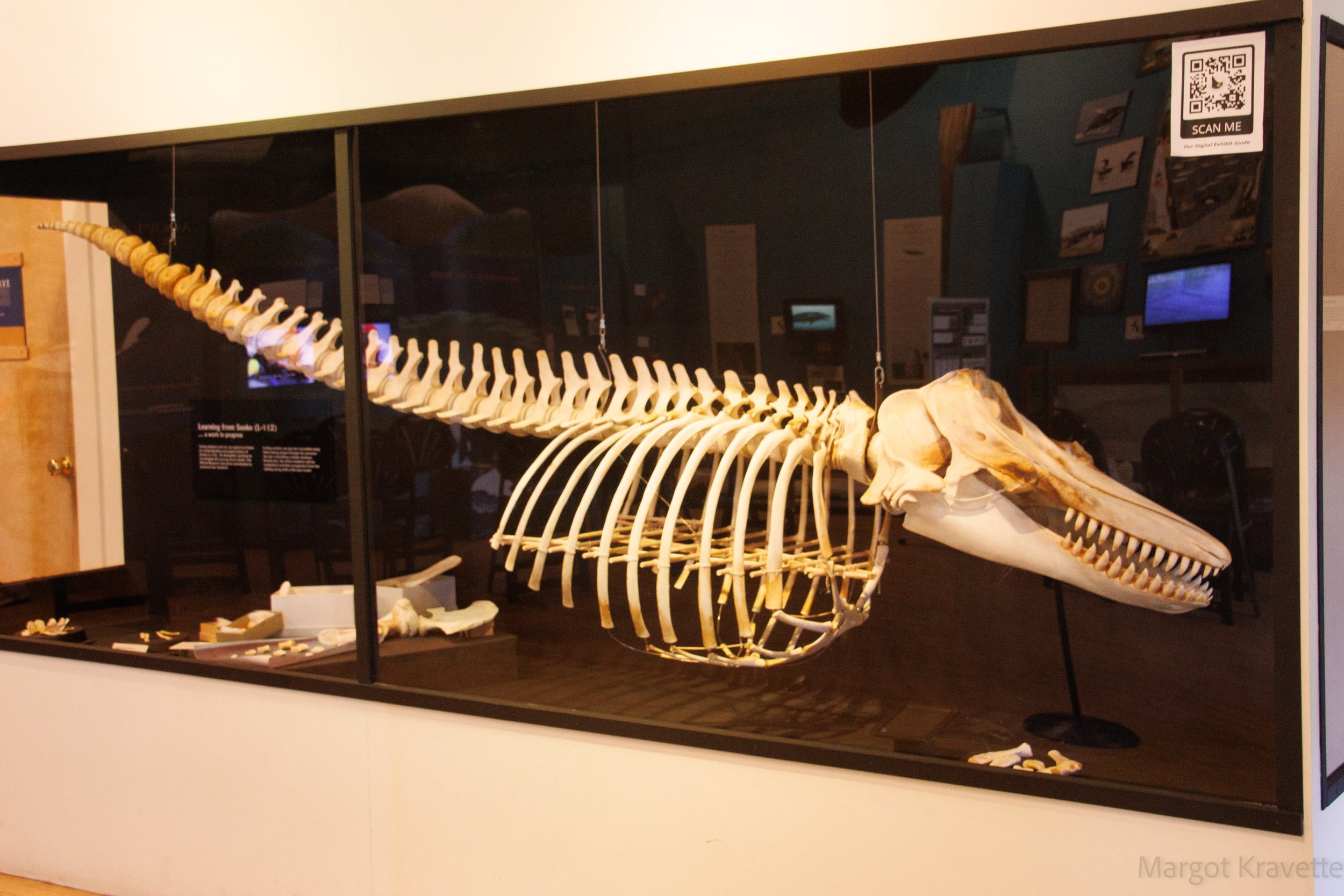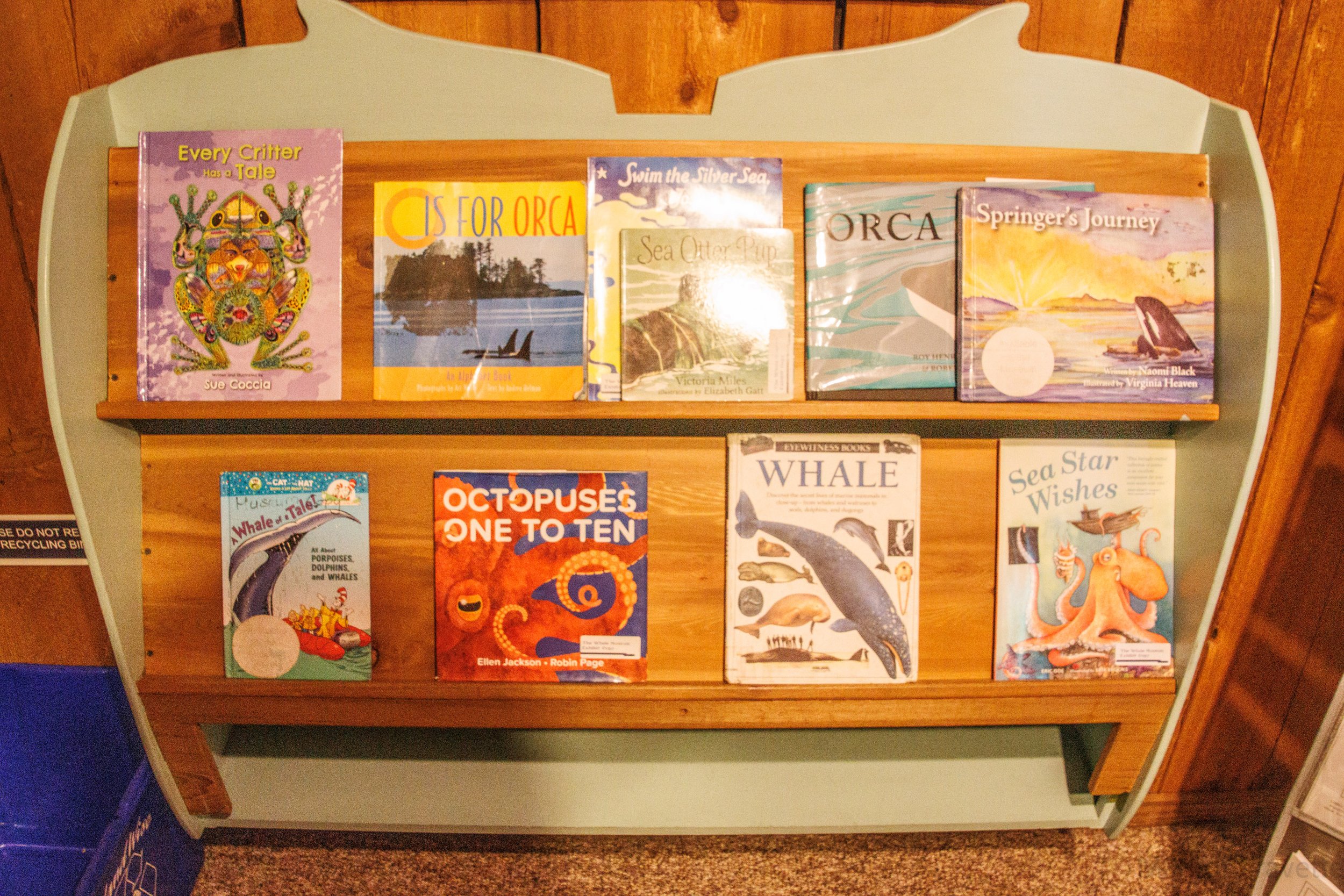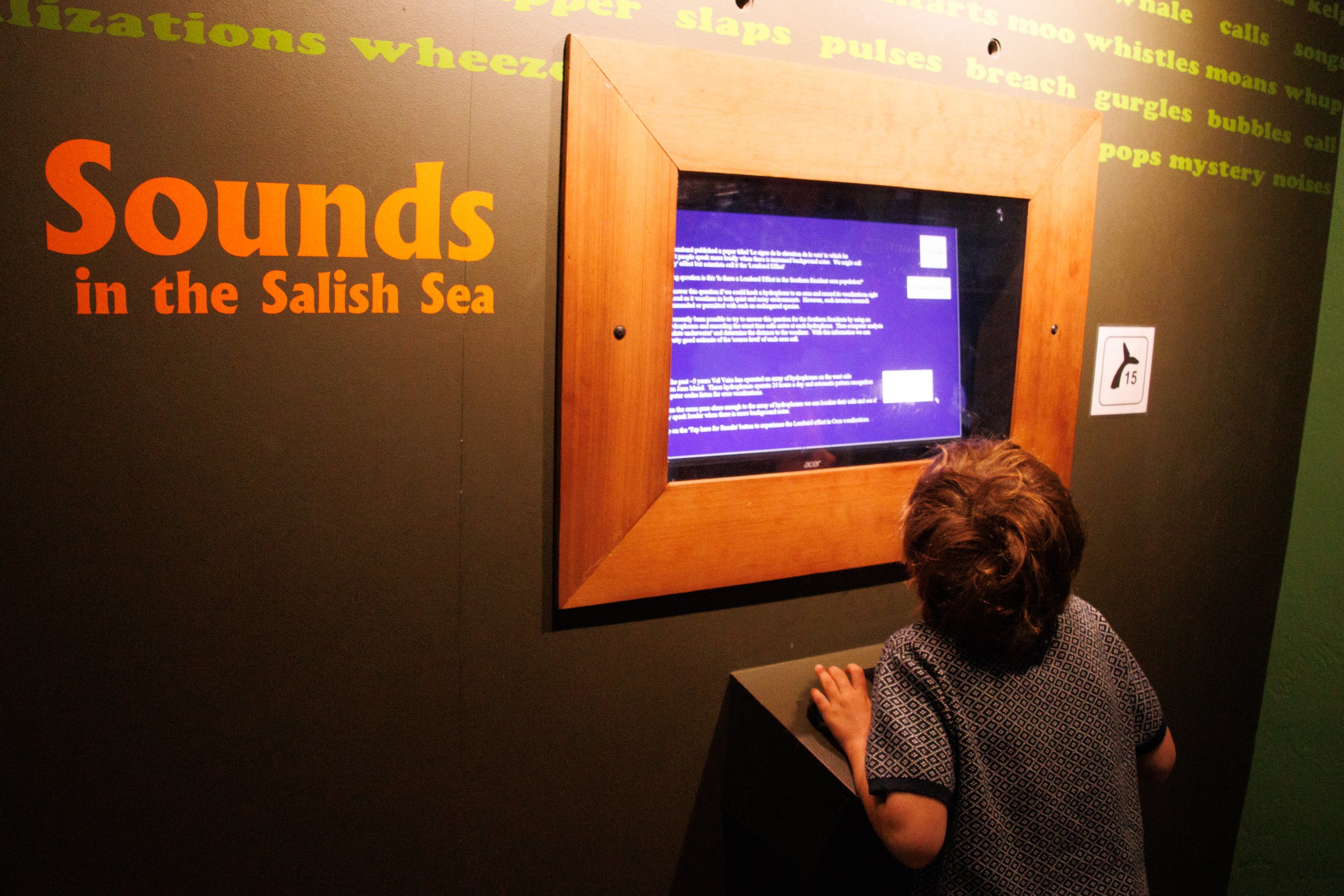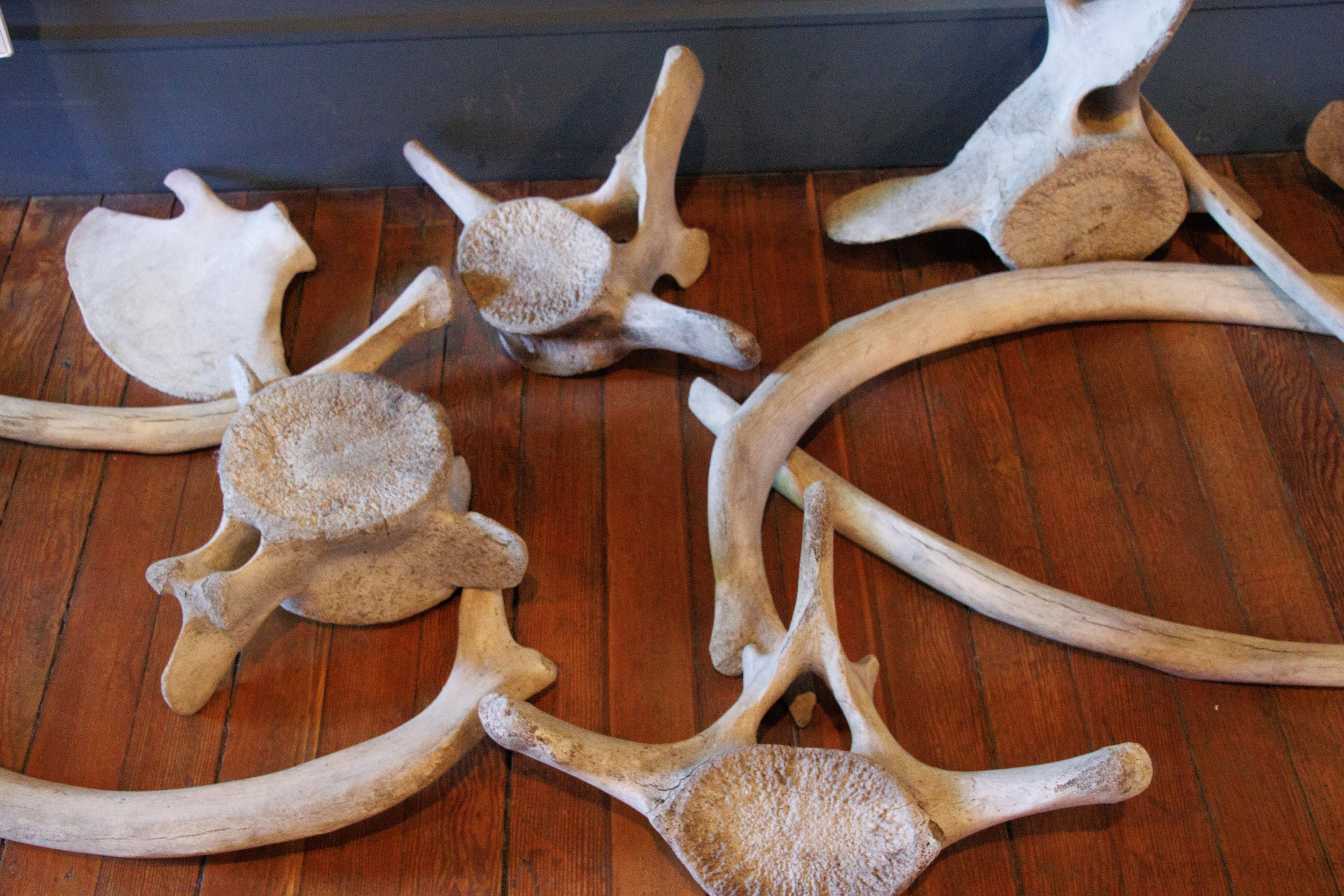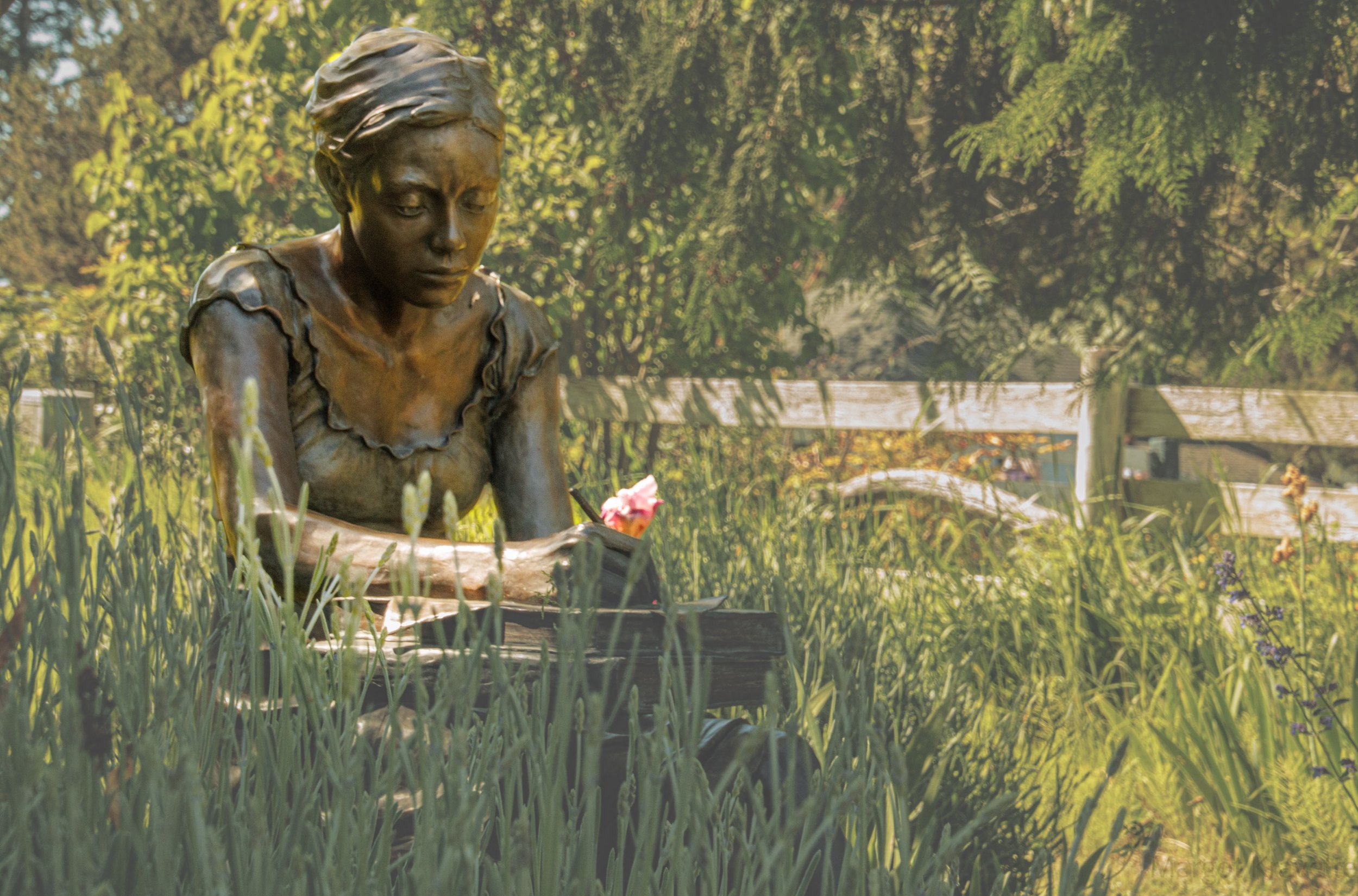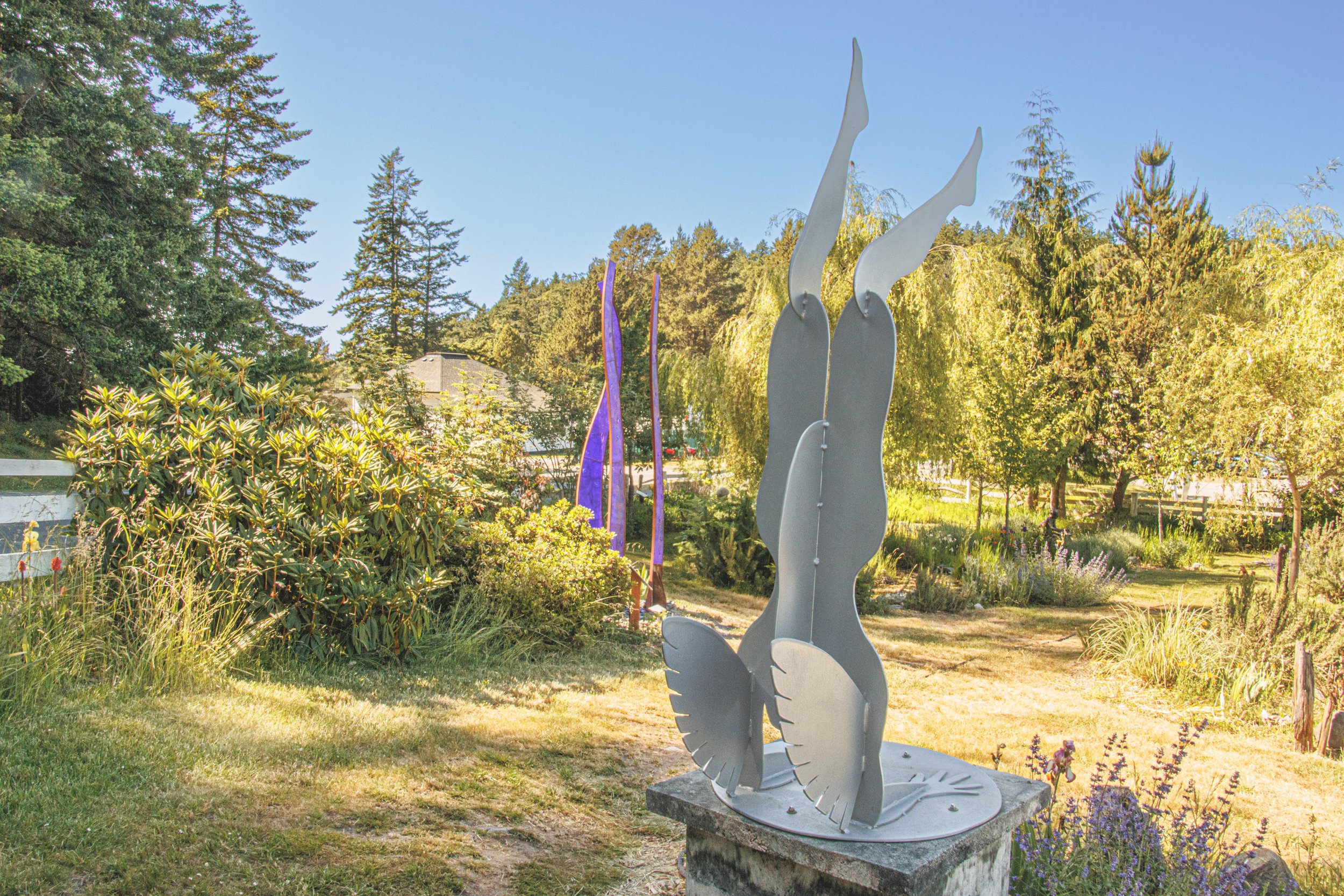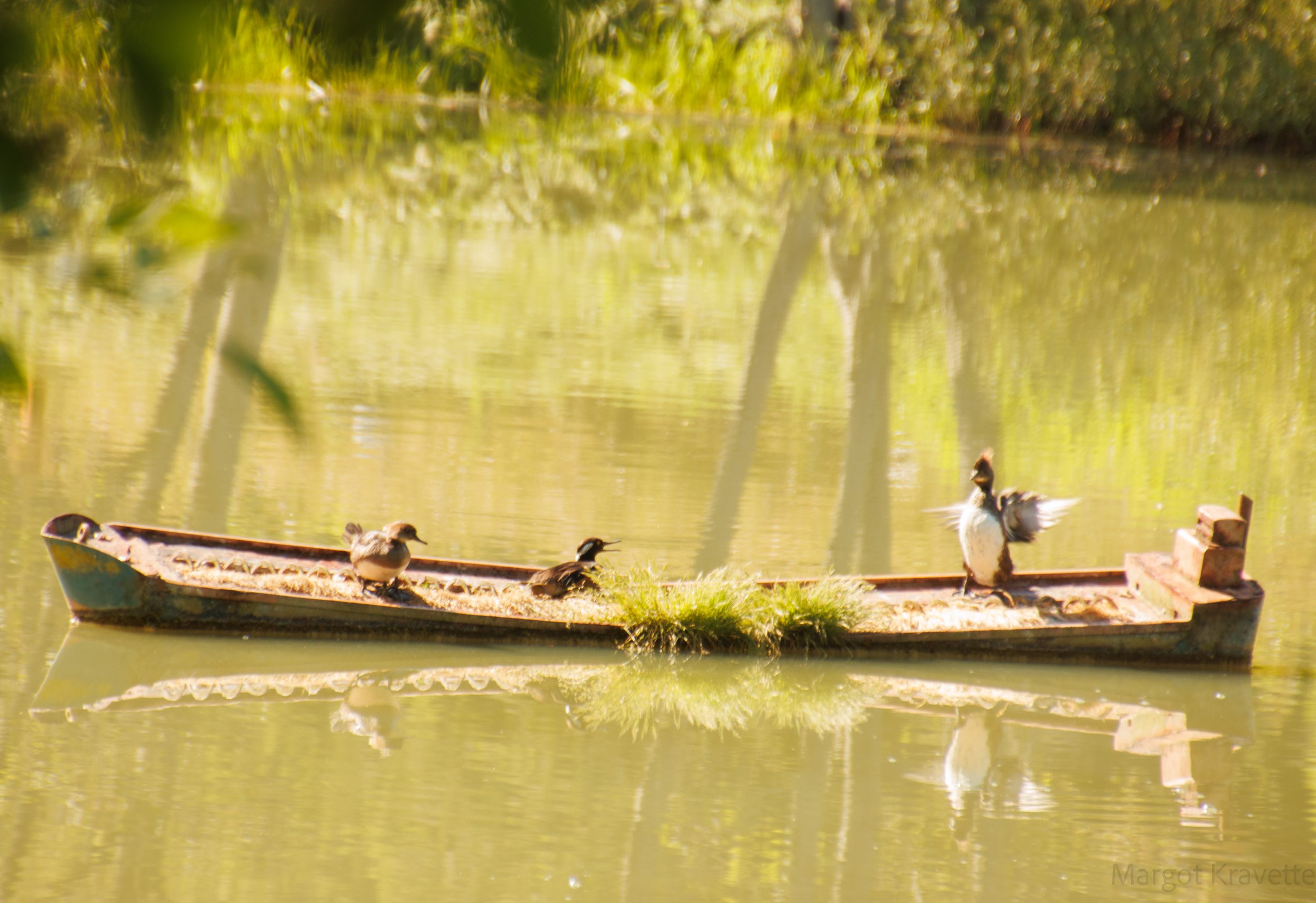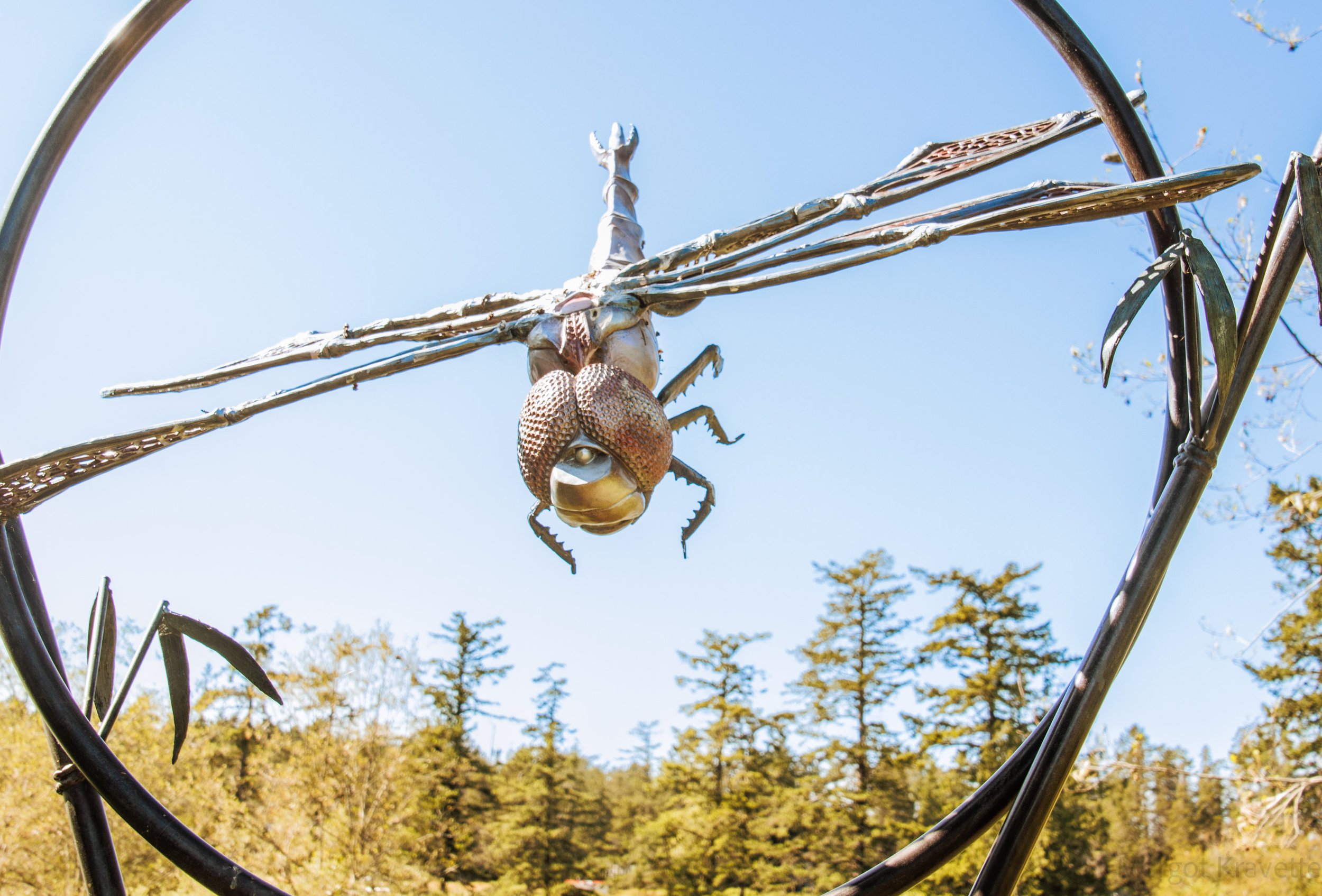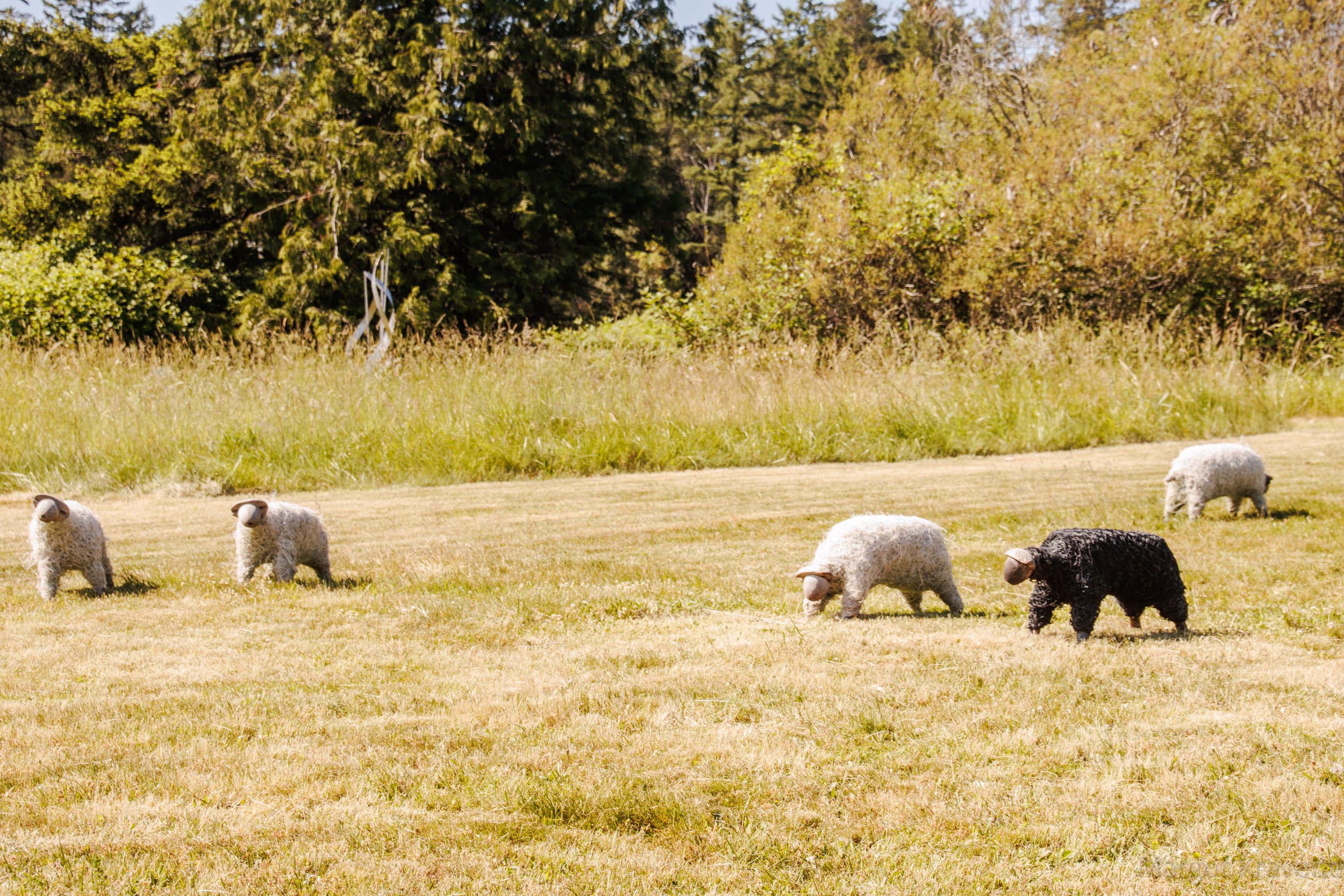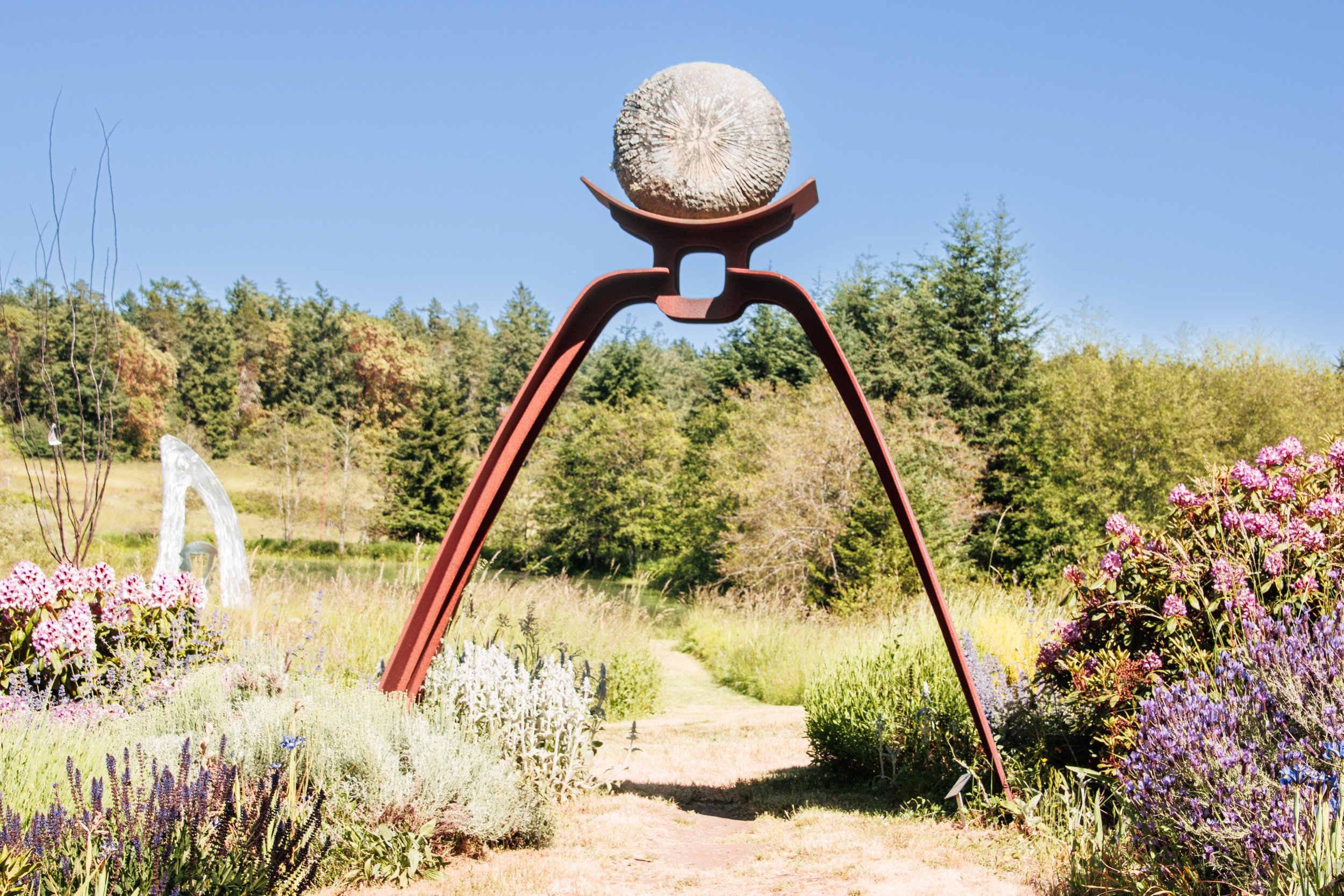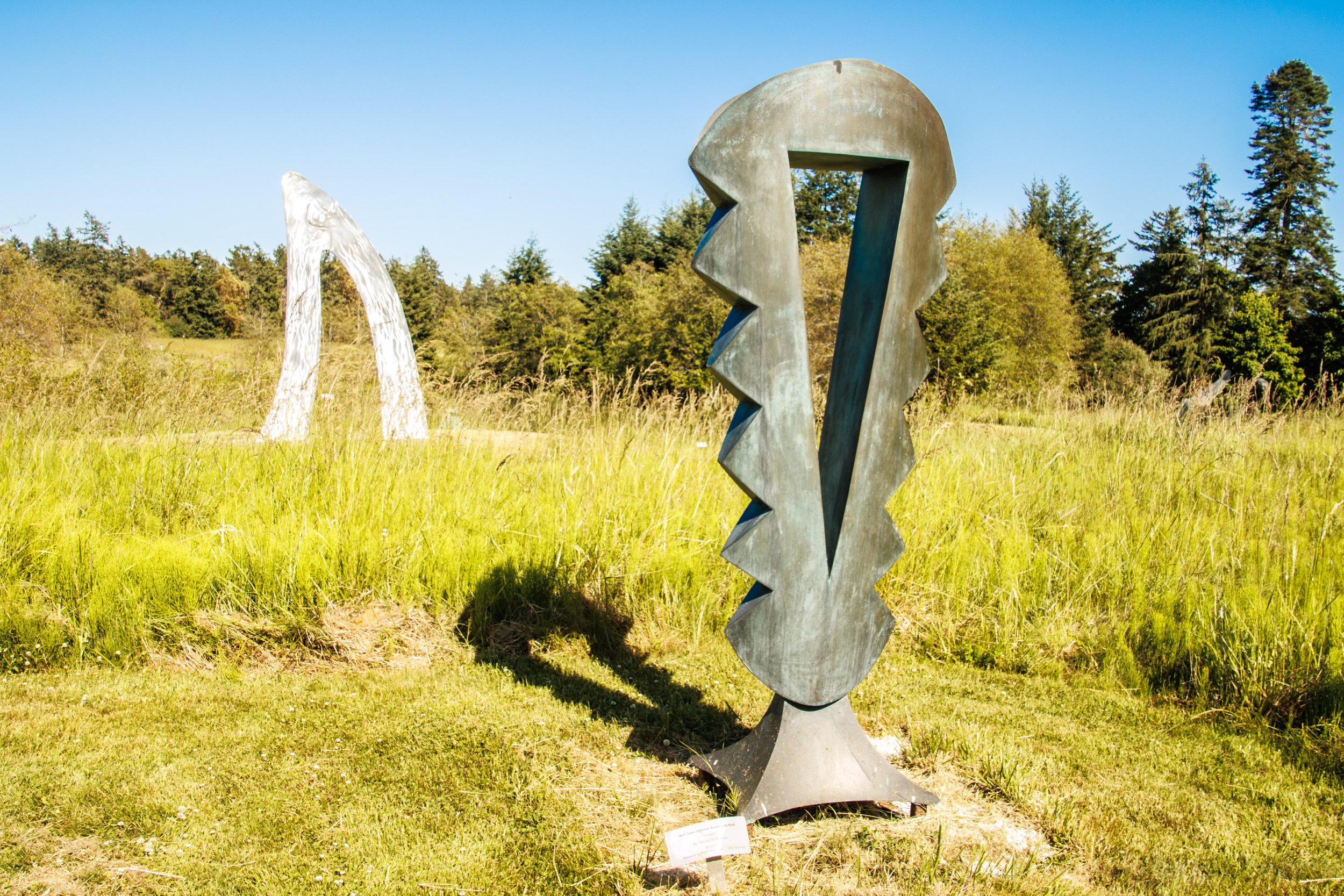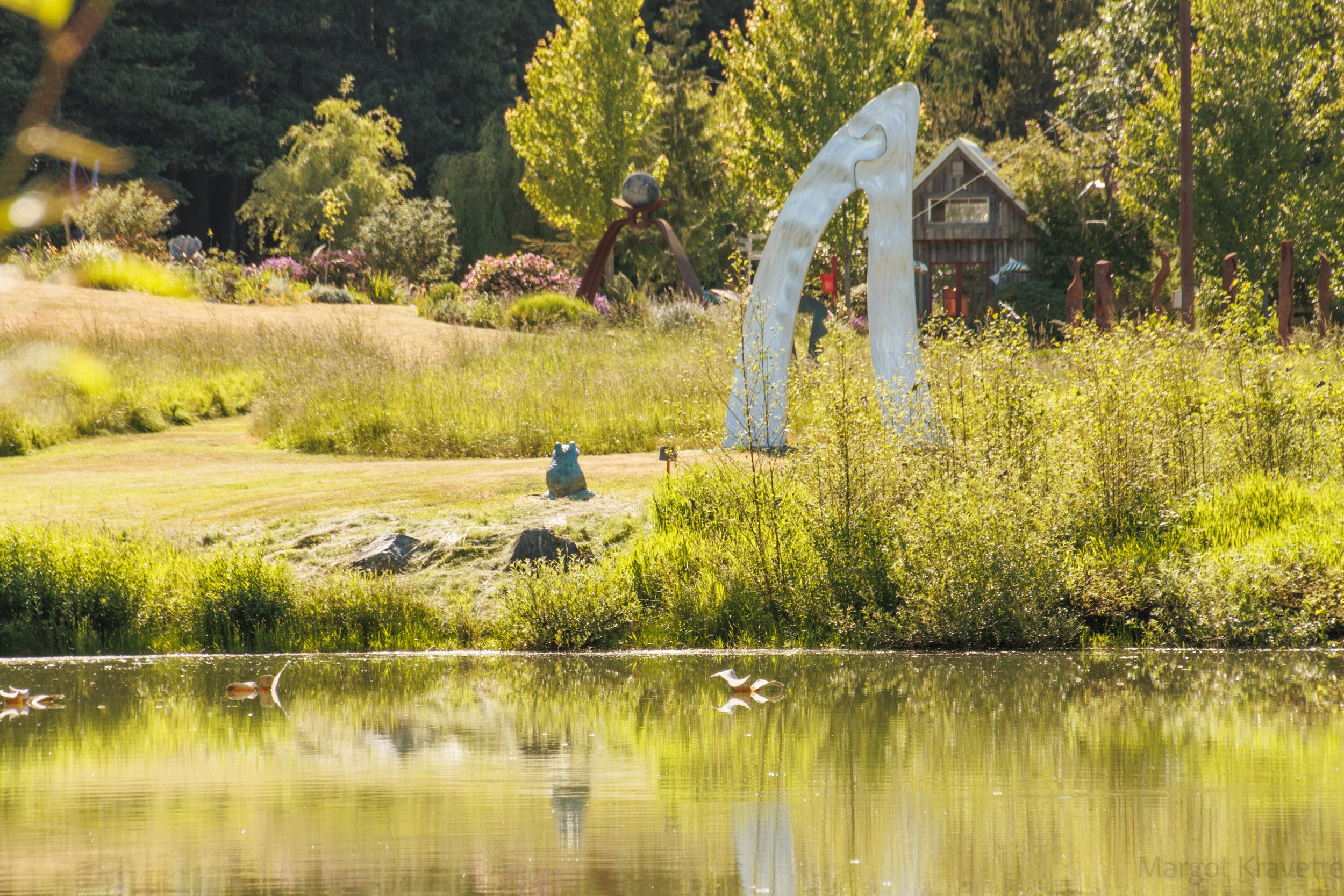San Juan Island
The three of us left my house at 6:30 am to be sure we got to Anacortes where we had reservations on the 9:30 ferry. It took us just about one and a half hours to get there, and we were fortunate enough to get on the earlier 8:30 ferry, getting to Friday Harbor before 10:00. San Juan Island is the second largest of the four major San Juan Islands, after Orcas. Historically it is most well known as the location of the Pig War, as described in a previous post on this web site. However, there was no lack of other places to visit throughout the island.
Portals of Welcome
While walking around the Port of Friday Harbor we located a beautiful two-sided wood totem-type sculpture, the Portals of Welcome, carved by Susan Point, a Salish Coast artist. The colorful carving is meant to welcome visitors to the San Juan Islands and to acknowledge the Native people who were the original residents and still have presence on the islands. As I looked through the sculpture which had the appearance of a gateway” I had a wonderful view of the water. I watched boats docked in the marina, and the ferries that come and go from the Island all day long. Looking toward the east I was imagining how beautiful a sunset would be.
Whale Museum
Since we were already in the town of Friday Harbor, we stopped at the Whale Museum that proudly provides education and research about whales and the bio-network of the Salish Sea. This museum opened in 1979 and was the first in the country to focus on a single species living in the wild. We shared the space with a group of school children and their teachers, and together they were using the museum’s resources to complete an assignment about whales. In addition to the exhibits, artwork, models, and artifacts there are whale skeletons of all sizes hung and housed throughout the well utilized space. I was most impressed by the family tree of the local orcas and the area where you can listen to the sounds of the Salish Sea under the water.
Lime Kilns
In 1860, Lyman Cutlar, whose shooting of the pig started the Pig War, went into business with two other men to begin extracting lime from limestone on the west side of San Juan Island, near where the Lime Kiln State Park would be named over 100 years later. After 13 years and the passing of several ownerships, the business was ultimately owned by Catherine McCurdy.
Later, in 1886 John McMillan purchased both the McCurdy kiln and land at Roche Harbor where two lime kilns had been built by its previous owners and had started quarrying and processing limestone. His company was called the Tacoma and Roche Harbor Lime Company, acknowledging his earlier lime business in the Puyallup Valley. McMillan started a project to improve both the process and the physical plant, and ultimately had 13 kilns. The production increased from 8,000 barrels annually to 150,000 barrels in the same time frame. It grew to be the largest limestone operation in Washington State and held that position until the 1930’s.
The quarrying and production process began when limestone rock was blasted from the vertical face of limestone deposits. Large and medium sized boulders would be blown apart and reduced in size for the rock to fit in the kiln. Once in the kiln, a vertical chute with fire boxes on the sides, the limestone would go through a calcination process at 1650-2000 degrees Fahrenheit, to drive off carbon dioxide, and leaving pure lime. The burned rock, much smaller by this point, was raked into special barrels which were loaded onto wagons on tracks and pulled by horses to a storage location where they would remain until they were sent to market. Adding lime to materials such as cement, concrete bricks and mortar, replaced construction with wood that was susceptible to fire damage and destruction. The basic process is still used today with much more sophistication in both the kilns and chemistry.
Lime Kiln Point State Park
Lime Kiln Point State Park is a 36-acre park that is one of the most popular places to whale watch in the world. Between May and September, you can view the water from the Lighthouse or on benches scattered along the rocky bluff. The Park is a beautiful place to visit even if you don’t see whales. Views to the southwest give you the Olympic Peninsula, towering over the Strait of Juan de Fuca, and you’ll see Vancouver Island looking straight across Haro Strait on the west.
The lighthouse was brought to the park in 1919, and with its original kerosene lamp it kept the flame on through dense fog and winter storms. The Interpretive Center and the Lighthouse are operated by volunteers. The kiln described above had fallen into disrepair and was reconstructed by the State Parks. To get to the kiln, either go from the upper parking lot on a short ADA trail, or from the lighthouse north on a narrow, windy, more challenging trail. Follow the signs either way.
Afterglow Vista
John McMillan, of Lime Kiln fame, wanted a place where he and his family would be buried and that represented things important to him including the Masons and his fraternity Sigma Chi. He chose a place one half mile deep in the forest in the Roche Harbor area of San Juan Island, past the tiny cemetery. He named it the Afterglow Vista, otherwise called the McMillian Memorial Mausoleum. With its 6 orange columns, created to be the same size as those at Solomon’s temple, the name is no surprise. One column is broken and represents that “man dies before his work is completed”. The table and chairs symbolize the family getting together again after death. Each of the bases of the limestone chairs serve as the crypt for each of his family members. And as with the single broken column, one of the chairs is missing. Masonic Order defines other parts of the architecture – the curved pathways and the number of steps.
The excitement came, however, on my return through the forest when I discovered I had lost my phone somewhere on or off the trail. After a brief search, I returned to the house where I was staying, came back with my computer and clicked on “Find My Phone” which took me close enough to the correct location where I found my phone casually sitting on top of some grasses. A very close call.
San Juan Island Sculpture Park
Also in the Roche Harbor area sits the enjoyable San Juan Island Sculpture Park. Set on a 20-acre piece of land owned by the Roche Harbor Resort, it has approximately 150 sculptures by about 90 upcoming and well-known artists primarily from the Pacific Northwest. Managed by an eight-member board and many volunteers. Some of the pieces in the park are for sale by the artists, and their asking price is listed. There are multiple trails to take around the park, and beaches with plenty of grass where you can have a picnic.
I look forward to returning to San Juan Island to enjoy the water. There are many places where walking and sitting may be all you need to do. And I think that sounds just perfect.



